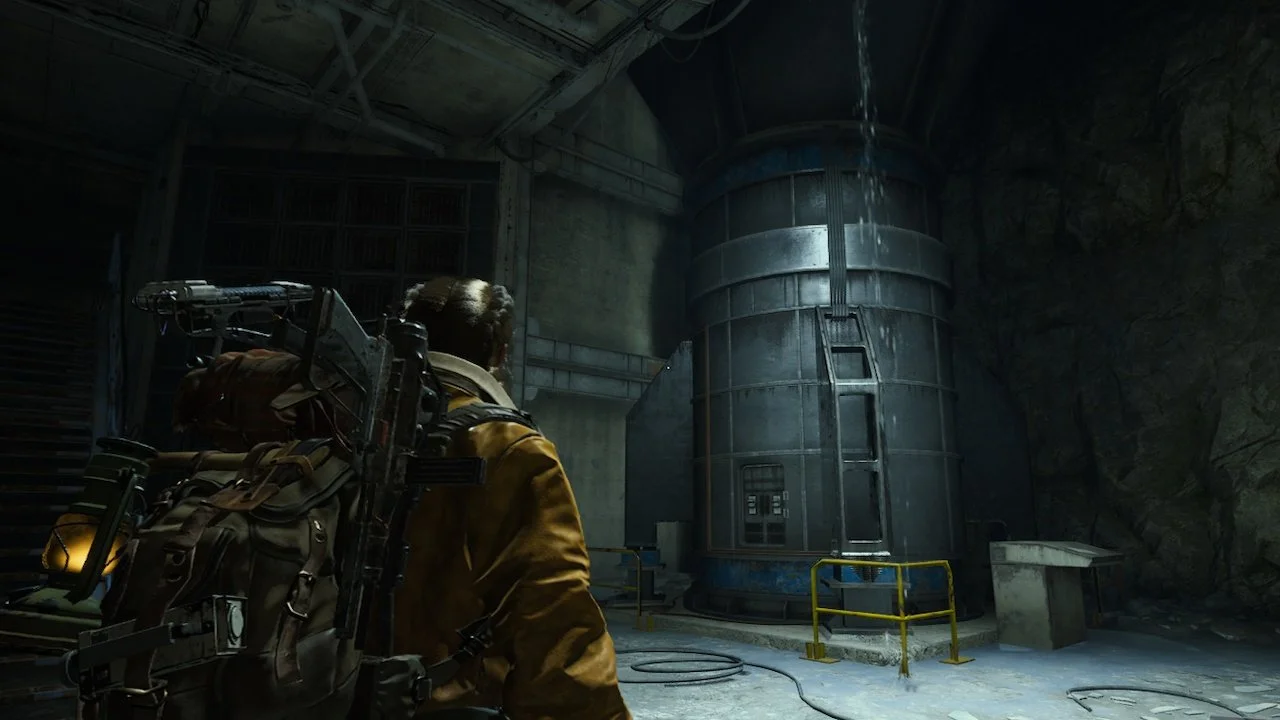When I hear someone say video game streaming, flashbacks of OnLive and PSNow come flooding into my memory. The occasional drop, consistent latency issues, missing frames, and loss of fidelity are all scratches on the disc of why I think video game streaming can only really be for less intensive titles than your typical Triple A into the foreseeable future. Enter Jump, a video game streaming service that from what I can tell is hitting all the right marks in having a stable platform. Last Tuesday I was given the chance to test out the closed beta for myself, and despite my initial skepticism, I walked away thoroughly convinced of its potential. That is to say, I think this platform has the potential to set the example for streaming video games.
To start I think it's important to get my misgivings about streaming out of the way. I've never once doubted that video games could be streamed, I just have always thought it wouldn't be practical in the near future. Even as a teenager I saw the potential in the ability to simply use ones internet connection as the main device for gameplay, but even back then I thought that internet speeds would be too slow for the average person. Then OnLive came along. A service that promised all these things were mere hurdles that their innovative service could overcome. With media ranting and raving about it, I abandoned my skepticism and joined the hype train. Which of course was rewarded with a service that lacked upon arrival. At the time, I had one of the better internet connections money could buy, and yet the service struggled. Games would suddenly lose fidelity. Latency issues on the controls would ensure that anything requiring knee jerk reactions were doomed to failure from the start. And finally, of course, there was the consistent issue with games flat out dropping. Intense moments would be interrupted by a sudden halt in connectivity flow. I loved the idea of the service, but technical issues continued to impede my support and endorsement of it. I watched as the service slowly burned away, and walked away more skeptical than I originally ever was. A few years later, Sony announced plans for its streaming service, and already before the first sentence had finished, I found myself questioning it. When I was invited to try the open beta for PSNow, and ran into the same problems as before, I quickly disregarded the service as another attempt to tap into a market that was technologically un-tapable. (In the Unites States at least)
From all of these experiences, I did notice however, that smaller less demanding titles not only worked well, but were actually havens for the aforementioned issues plaguing those two services. Thus began my view, that for the time being, the only really good way to tap into this market would be to go through indie titles. More demanding titles could be downloaded like GameTap, but streaming them seemed by and large something left to the far flung future.
So when my friend sends me an invite to try out this new service, and it's primary focus is the exact thing I had been howling about, you better believe I was immediately interested. I went in with a certain determination to break the product. The kind of fiery eyed determination one gets after having been victim of the industry's most devious ways to pull the wool over their eyes. I'm pleased to say that my attempts at breaking the desktop application was met with total failure. The user interface and systems ran almost frighteningly smooth. The games listed were both 2D and 3D, with a focus on the 2D ones.
Whatever game I was playing, I ran into very little resistance in terms of issues previously mentioned. The service uses what they call a Hyperjump Delivery technology, which I'm curious to ask how that works. Be it some magical compression system, or just an extremely well coded packet stream line, I want to know more. Of course I'm not trying to say it's perfect, there are laws of physics in play here, but it's pretty damn close.
The user interface was simplistic and wholly accessible right off to the left of the screen. This of course requires you to not be playing in full screen. But I wonder if they have intent to design a pop-up box in the UI for those who like to play in full screen. They might have already done that, and I just missed it. Either way, the UI is Apple levels of user friendly with ergonomic design to match.
Now all of this may be starting to sound as if I'm just another PR agent for the company, and to be fair, it's been nothing but praise. But there are things I do want to point out that may have distinictually warped my position. For instance, I was testing this out on the desktop app and again have one of the better connections money can buy. My computer is also a power house of a machine, capable of running most games at 4k with no problem. I did not have the opportunity to test this on a small laptop over wi-fi.
There are also things that really can't be helped. As a man of physics, I spend my days studying the laws of reality, and there are limits to what this can do. The speed of light is still the ultimate speed limit. How much data can flow in and flow out is still limited by your connection. Also, a person with the game downloaded onto their system will always have an advantage over the person streaming in the same scenario due to the laws of nature.
Despite these minor things that should be obvious, it was hard for me to find a flaw with the service. Which is where I want to draw focus on in this article. All too often we are given products on launch that are broken, and riddled with bugs. Somehow companies believe this is acceptable. Its become such an embarrassment to me, that any software I touch upon final release gets harshly critiqued by me in this regard. You shouldn't be surprised to see a review of mine take a decent product worth a 9 or 8 and drop it to a 6 or 5 because of the amount of bugs and broken issues. That may sound harsh, but I feel it's necessary given the amount of money we're spending on these broken things. Now sure, everything is going to have a bug or two upon release, this being no acceptation, and that's fine. I'm not worried about a few bugs, but when over half the products are broken and completely unusable without that day one update from the get go, you better believe I'll be tallying some marks. This industry needs big changes, and that's one of them.
Getting back to the main subject, Jump does not suffer in this way. The fact that it's a closed beta at that, has me thrilled! The build I've played seems to be properly functioning, and has minimal bugs. This is one of the few instances I can say we're looking at a solid product. Which is good, because now more than ever, we need a shift in industry standards. Every company in our industry is striving to be innovative, but what we really need is stability. Don't get me wrong innovation is important, but what good is being innovative and unique if it's completely useless? The reason I've chosen to endorse this product from the get, is because it represents that mantra completely. Yes, there are unique little innovations, and I am curious to know how those work, but the most important thing is how solid it runs. We all know what video game streaming is, we don't really need to reinvent the wheel. But what we do need is streaming that's stable and dependable. Something that aims for the tangible and realistic, and not the lofty and impossible. Part of the reason streaming never took off in this regard is because of companies focusing too much on the latter of those two.
To close this rant, I do believe that Jump has the potential to be the premier in smaller video game streaming. They intend to roll this out to market during the later parts of summer, and I would definitely head over to their website to check it out. There are some kinks that still need to be worked out for sure. It's not all sunshine and rainbows, and it never will be. But as I've said many times before, this product has my full support, because Jump is the way video game streaming should be.




















